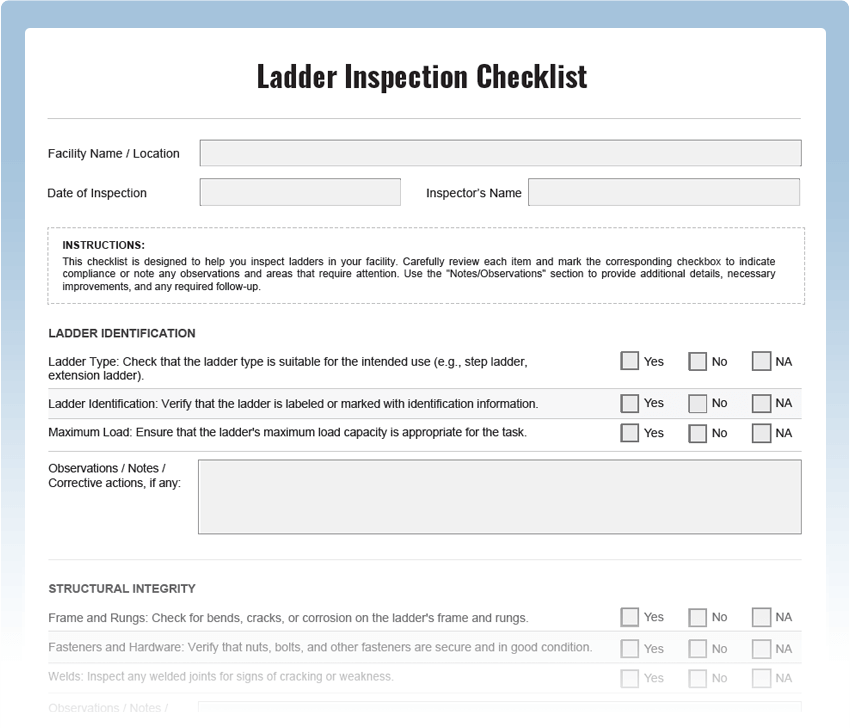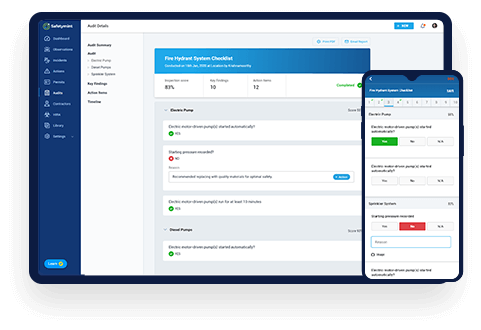Ladder Inspection Checklist
Ensure safe access and prevent accidents with our comprehensive Ladder Inspection Checklist. This free PDF template is designed to help you assess the condition and safety of ladders within your workplace. By conducting regular ladder inspections, businesses can identify potential defects, ensure compliance with safety standards, and protect employees from ladder-related hazards.
Digitize this Checklist on Safetymint
- Create unlimited, customized checklists
- Add Actions, with automated reminders
- Works seamlessly with or without internet
- Access via web browsers, mobile or tablets

What is a Ladder Inspection Checklist?
A Ladder Inspection Checklist is a systematic tool used to evaluate the condition and safety of ladders. It includes a series of checkpoints designed to assess various aspects of ladder construction, stability, and maintenance. Regular ladder inspections are essential for detecting defects, ensuring ladders are fit for use, and preventing falls and injuries.
Key Areas to Inspect in a Ladder Inspection Checklist:
- General Condition: Evaluate the overall condition of the ladder, including signs of wear or damage.
- Stability: Check the ladder’s stability and ensure proper locking mechanisms.
- Rungs and Steps: Inspect rungs or steps for secure attachment and even spacing.
- Side Rails: Verify the integrity of side rails and their connection to the ladder.
- Feet and Base: Assess the condition of ladder feet and ensure proper grip.
- Labels and Markings: Confirm the presence of safety labels and load capacity information.
Common Ladder Inspection Checklist Findings:
Frequent issues found during ladder inspections include:
- Worn Steps: Steps or rungs that show signs of wear, cracks, or bending.
- Damaged Side Rails: Side rails that are bent, cracked, or otherwise compromised.
- Missing Labels: Absence of safety labels indicating load capacity or proper usage.
Ladder Inspection Checklist Best Practices:
- Regular Inspections: Conduct ladder inspections before each use and on a regular schedule.
- Immediate Repairs: Address any identified ladder defects promptly with repairs or replacement.
- Proper Usage: Train employees on safe ladder usage and proper climbing techniques.
- Storage: Store ladders in a dry and secure location away from potential damage.




